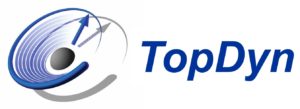

Seminar über die Physik der kondensierten Materie (SFB/TRR173 Spin+X und SFB/TR288 Kolloquium, TopDyn-Seminar)
May 19, 2016 at
2 p.m.
in
MAINZ-Seminarraum, Staudinger Weg 9, 03-122
Univ-Prof. Dr. Jure Demsar
Univ.-Prof. Dr. Hans-Joachim Elmers
Univ.-Prof. Dr. Mathias Kläui
Univ.-Prof. Dr. Thomas Palberg
Magnetism of free and deposited magnetic molecules
Prof. Jürgen Schnack (Faculty of Physics, Bielefeld University, Germany)
Magnetic molecules constitute small quantum spin systems with interesting properties. After introducing this class of materials I would like to focus on the magnetocaloric properties of such molecules as well as on possible modification of magnetic properties in contact with non-magnetic metallic substrates. For each of these examples I am going to explain very recent theory developments to calculate magnetic observables for large spin systems.
[1] J.W. Sharples, D. Collison, E.J.L. McInnes, J. Schnack, E. Palacios, M. Evangelisti, Quantum signatures of a molecular nanomagnet in direct magnetocaloric measurements, Nature Communications 5 (2014) 5321.
[2] J. Schnack, O. Wendland, Properties of highly frustrated magnetic molecules studied by the finite-temperature Lanczos method, Eur. Phys. J. B 78 (2010) 535-541; O. Hanebaum, J. Schnack, Advanced Finite-Temperature Lanczos Method for anisotropic spin systems, Eur. Phys. J. B 87 (2014) 194.